We explain what the Cretan civilization was, its origin and development. Characteristics of the palaces and the origin of the minotaur myth.
What was the Cretan civilization?
The Aegean or Cretan civilization is considered the first great European civilization and was located on the island of Crete, south of Greece , during the Bronze Age between 3,000 and 1100 BC. C. This civilization is also known as the Minoan civilization and owes its name to the mythological king Minos who, according to legend , was king of Crete.
During its heyday, the Cretan civilization was noted for its commercial and shipping might . The island of Crete was considered the most important political and cultural center in the Aegean Sea, as it was located in a strategic geographical point with a connection to Europe , Asia and Africa .
In addition, these towns stood out in art , in branches such as ceramics and painting , and in architecture , with the construction of palaces such as that of Knossos. These pieces and constructions were used by archaeologists and researchers to learn about the history and characteristics of the Minoan civilization, because the existing written records of this culture could not yet be deciphered.
Origin and development of the Cretan civilization
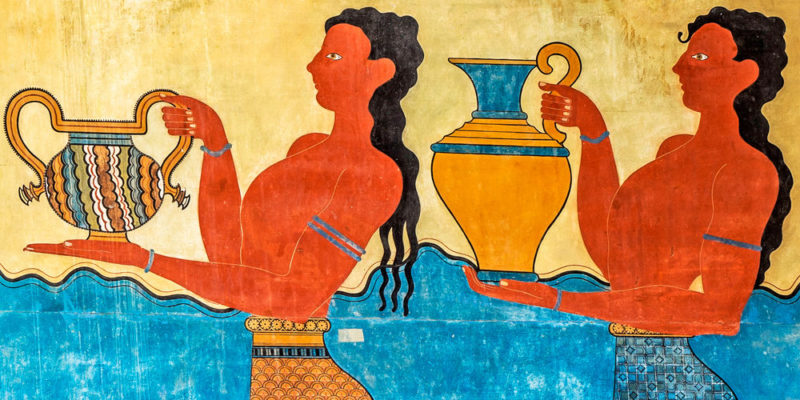
Between 3,000 and 2,000 BC. C. the Cretans were grouped into small communities and formed the first villages . It is believed that part of these populations arrived in the Cretan territory from other places, although there are also records of human life in that area during the Neolithic .
Because the writings of this civilization could not be deciphered, all that is known about life on Crete during this period was obtained from the study of ceramics and found objects. From this evidence, three main stages of Cretan civilization are usually identified:
- Prepalatial . This stage marked the beginning of the consolidation of the Minoan culture, which was characterized by urban growth and by a population that dedicated itself to agriculture, hunting and forestry. Later, the privileged geographical location of the island and the lack of some resources led this culture to develop navigation and trade . The knowledge to manipulate the different metals and materials prompted the Cretans to market their products with Egypt and with the inhabitants of the Cyclades Islands.
- Palaeopalatial . The growing commercial and artistic development, and the population increase of Crete allowed the inauguration of a new stage that was characterized, mainly, by the construction of palaces that functioned as the seat of Cretan economic and social life. These buildings were large and had an internal courtyard and storage rooms.
- Neopalatial . During this period a set of natural catastrophes destroyed the palaces, which were later rebuilt. These new palaces and buildings were even more dazzling than their predecessors, due to Cretan economic growth resulting from commercial expansion and the development of metallurgy and ceramics.
Artistic and cultural development of Crete
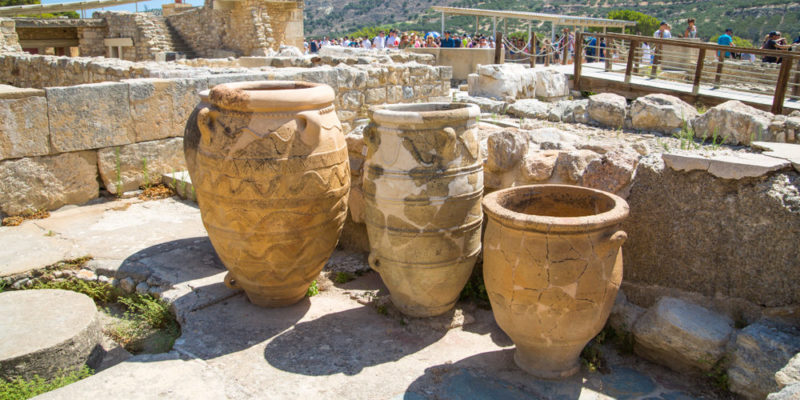 Much of the evidence of the Cretan civilization arose from the study of the ceramics of the time. Arthur Evans was a British archaeologist who dedicated a large part of his career to the study of this civilization, which allowed us to learn about the work of the Cretans in different areas such as metallurgy, ceramics and architecture.
Much of the evidence of the Cretan civilization arose from the study of the ceramics of the time. Arthur Evans was a British archaeologist who dedicated a large part of his career to the study of this civilization, which allowed us to learn about the work of the Cretans in different areas such as metallurgy, ceramics and architecture.
- Metallurgy . It is considered that this civilization had a great performance and ability with metals: they were good jewelry makers in gold , bronze and copper .
- Architecture . This culture was characterized by the construction of luxurious and large palaces, which were found in places like Knossos and Phaistos. These buildings were large, had columns, patios, had no walls and had a large number of rooms. In its environments, the presence of frescoes stood out, which were paintings with colorful and bright tones in which landscapes and figures were represented.
- ceramics _ This artistic manifestation was the one that made it possible to know much of what is known about the Cretan civilization. These towns had a great knowledge about the handling of ceramics and they built vessels, amphorae and cups. To decorate them they drew and painted marine animals and geometric figures and used colors such as yellow, red, white, brown, orange and pink.
- Writing . This culture developed a script that was classified into three stages. In the first place, they were hieroglyphs similar to those produced by the Egyptians and then there is evidence of linear A and B writing. Although there are written records of the time, they have not yet been deciphered.
Cretan religion
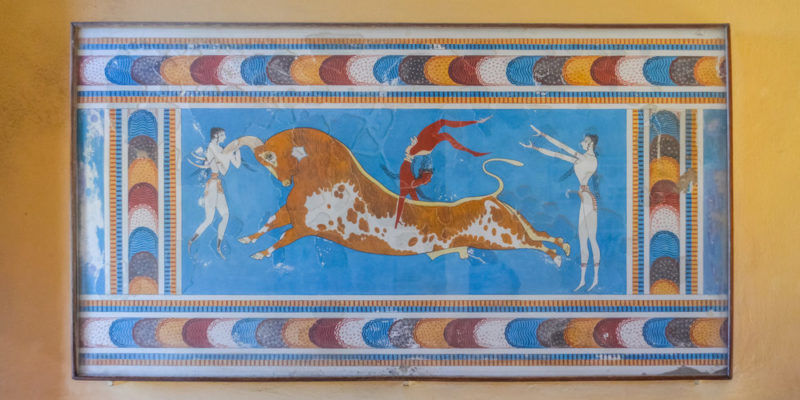 Like so many other peoples of antiquity, the Cretan civilization was characterized by being polytheistic . The Cretans worshiped various gods and were naturalists, that is, their gods came from or were related to nature.
Like so many other peoples of antiquity, the Cretan civilization was characterized by being polytheistic . The Cretans worshiped various gods and were naturalists, that is, their gods came from or were related to nature.They worshiped the mother goddess of nature , who was a symbol of fertility and who was represented by a female figure who was usually accompanied by animals such as snakes and birds .
Everything that is known about the religion of this civilization was obtained through the objects, art and buildings found. It is believed that the Cretans worshiped their gods both privately and publicly and for that they made offerings that consisted of different dances, processions and animal sacrifice rituals .
For this civilization the figure of the bull was of great importance , which was a symbol of life and strength. In many of the cult ceremonies a bullfighting game was performed, which consisted of one of the acrobats throwing himself on a bull that he had previously provoked.
Cretan palaces
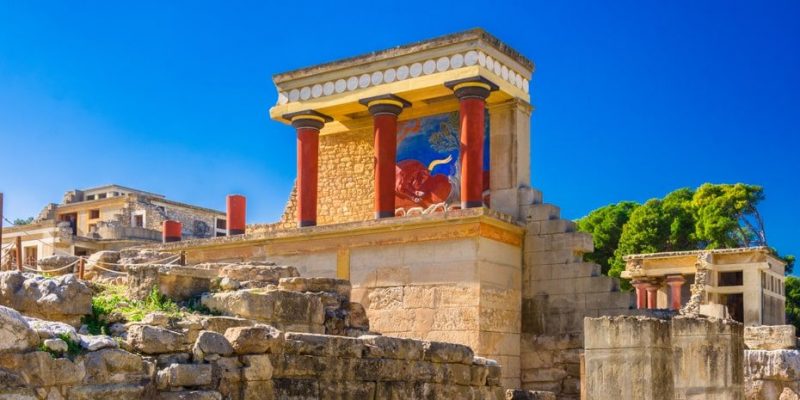 Around 2,000 BC C. the great cities were created in Crete in which imposing palaces and mansions were built. Each palace was an autonomous structure from which the distribution or storage of food and the political and religious life of each territory were regulated. Similar characteristics existed among the various palaces that were situated throughout Crete. Many of them had storage areas, kitchens, workshops, sanctuaries and theaters . They were characterized by not having walls around them, having internal courtyards, workshops (in which many of the pieces that were later marketed) were made, columns and frescoes that decorated the walls.
Around 2,000 BC C. the great cities were created in Crete in which imposing palaces and mansions were built. Each palace was an autonomous structure from which the distribution or storage of food and the political and religious life of each territory were regulated. Similar characteristics existed among the various palaces that were situated throughout Crete. Many of them had storage areas, kitchens, workshops, sanctuaries and theaters . They were characterized by not having walls around them, having internal courtyards, workshops (in which many of the pieces that were later marketed) were made, columns and frescoes that decorated the walls.Around 1700 BC C. some of these palaces were destroyed, it is believed that because of natural phenomena, and then rebuilt.
The most outstanding palaces of this period were:
- Palace of Knossos . It is the most important palace on record and is located a few kilometers from Heraklion, the capital of the island. It was discovered in 1878 and the excavations were commanded by Arthur Evans.
- Phaistos Palace . It is located in the southwest of the island, 50 kilometers from Heraklion, and is the second most important palace. In it are patios, workshops and temples and its excavation was led by the Italian archaeologist Federico Halbherr.
- Malian Palace . It is the third most important palace discovered and is located in the north of the island of Crete. The building was built around a central courtyard and was destroyed, along with the palace of Phaistos and Knossos, and then rebuilt.
- Zakros Palace . It is located on the east coast of the island of Crete and stood out for its commercial and military importance. It is smaller than the rest of the discovered palaces.
Economy and politics of Crete
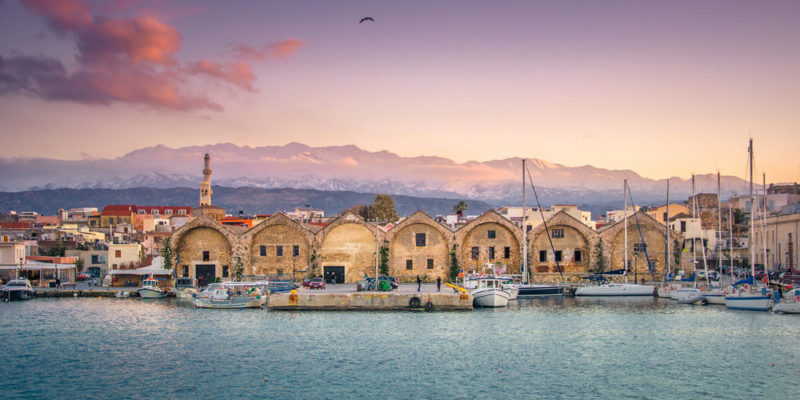 The economy of the Minoan civilization was sustained by maritime trade . Its proximity to the Nile delta allowed the Cretans to have a great cultural and commercial exchange with Egypt, Cyprus, Syria, Sicily, Asia Minor and the rest of Greece.
The economy of the Minoan civilization was sustained by maritime trade . Its proximity to the Nile delta allowed the Cretans to have a great cultural and commercial exchange with Egypt, Cyprus, Syria, Sicily, Asia Minor and the rest of Greece.Crete had highly developed handicraft production , for which it exported ceramic products, fabrics, and metal utensils. Agriculture and livestock were also important and many of the products obtained from these industries were exported, such as oil, wine, olives, wool and wheat. For its part, Crete imported metals from other territories, such as gold, copper and silver.
Although due to its size and structure , the palace of Knossos had a notable superiority over the others, it is believed that the Cretan territory was divided into autonomous parcels in administrative, economic and political matters. These centers had a palace around which political, social, religious and economic life was organized. Some scholars maintain the existence of a king and a court made up of nobles.
The myth of the minotaur
The minotaur myth is one of the most emblematic legends of Crete . The story goes that Minos, Sarpedon and Radamanthys were the three sons of King Asterion. After Asterion's death, Minos told his brothers that the will of the gods was for him to rule the entire palace. To prove it, he assured them that the gods would answer any of their requests and Minos asked Poseidon, god of the sea , to raise a bull from the ocean and promised that he would sacrifice it on their behalf.Poseidon did so, but Minos, seeing the beauty of the white bull, did not want to sacrifice it and hid it in his herd and gave the god of the sea another bull. Realizing the deception, Poseidon, as punishment, made Pasifae, the wife of Minos, fall in love with the bull and conceive a minotaur with him: a man with the head of a bull who fed on human flesh.
Minos ordered the construction of a labyrinth to enclose the minotaur because it generated disturbances in the town and ordered that fourteen young Athenians should be sacrificed each year (the product of disputes with that town) to feed it.
A young Athenian, Theseus, offered himself as a victim of the bull and together with Ariadne, the daughter of Minos with whom he fell in love, managed to kill the minotaur and get out of the labyrinth alive.
Fall of the Cretan civilization and origin of the Greek world
Around 1750 BC. C. a set of earthquakes shook the territories inhabited by the Cretan civilization and notably affected the centers and main points of development of this civilization. Although the cities were rebuilt, it is believed that they were once again devastated by natural phenomena.About 1400 BC. C., for reasons that are not clear, the Cretan civilization collapsed . Many scholars maintain that this occurred as a result of the eruption of the Thera volcano (now the island of Santorini) that caused the burning of the main cities of Crete. There are also theories that attribute the collapse of the Cretan civilization to external and civil wars.
During this period of decline, Crete was invaded by the Mycenaean civilization, a civilization of mainland Greece, and succumbed to their might.
The above content published at Collaborative Research Group is for informational and educational purposes only and has been developed by referring reliable sources and recommendations from experts. We do not have any contact with official entities nor do we intend to replace the information that they emit.6
Passionate about understanding and contributing to a world that does not stop changing. New forms of Work, Sustainability and Technology. For many years he has worked as a creative for large international companies. He has a Ph.D. in information technology and he has been doing quantitative research in the interdisciplinary areas of information systems, cyber security, data analytics and artificial intelligence. He continue to look for creative solutions through technology to help companies to be more humane and sustainable..
Leave a reply
Your email address will not be published. Required fields are marked *Recent post

Sport: What Is It, Types, Risks, Features, Characteristics and Examples

Dogs: Emergence, Features, Characteristics, Feeding and Breeds

Story: Definition, Elements, Structure, Features and Characteristics

